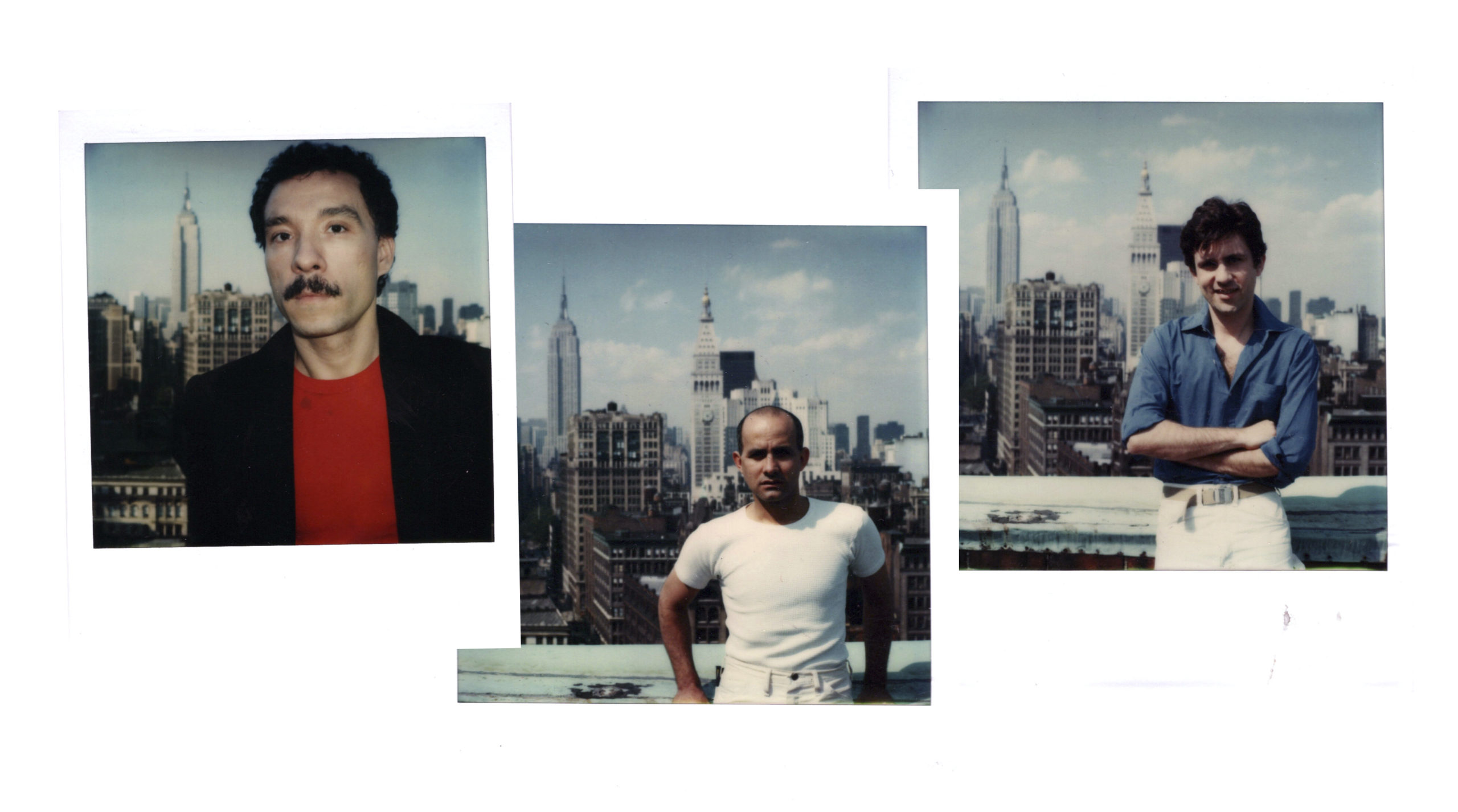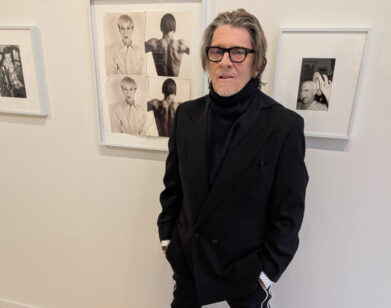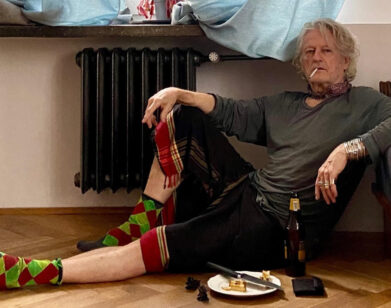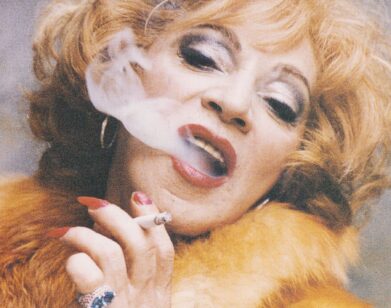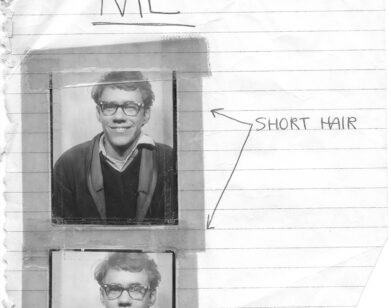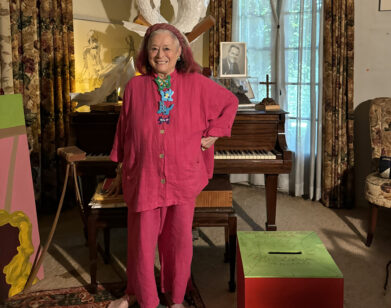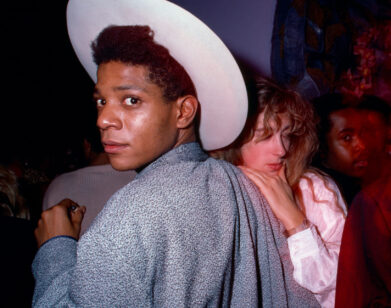from the archives
The Artful Legacy of Antonio Lopez and Juan Ramos Lives On
It happened one night at Le Sept. At the seam of the 1st and 2nd arrondissement, the very gay and now-defunct Parisian discotheque on Rue Sainte-Anne was the backdrop for a chance encounter that would shift the course of Paul Caranicas’s life in 1971. It just so happened that he wasn’t even present on the occasion. As Caranicas recalls of the fateful evening, “I had a boyfriend, Pino, and he was working in Club Sept, and [the artists] Antonio [Lopez] and Juan [Ramos] met him there, and Antonio immediately wanted to draw [Pino]. When he came home that night, he asked if I would go with him. He thought Antonio was Andy Warhol. He said, ‘Will you come with me to meet Andy Warhol?’ Of course, I said yes! Later, I went to the apartment and it was Juan and Antonio, it wasn’t Andy Warhol at all.”
While the expectation of meeting Warhol proved to be all smoke and mirrors, Caranicas’s ultimate introduction to the Puerto Rican-American artists Lopez and Ramos was not. Almost haphazardly, the trio became like the Three Musketeers—traipsing around Paris and, eventually, the globe. Perhaps that initial rendezvous at Le Sept was also the universe’s way of removing Pino from the picture, as a romantic liaison soon ignited between Caranicas and Ramos. If not an act of divine intervention, there’s no denying that the stars literally and figuratively aligned for the fast friends. From soirées with drag superstar Divine to bubble baths with Pat Cleveland, all the glitter and grease that encompassed the couple’s razzle-dazzle lifestyle seems too fantastical to be real. Thankfully, Lopez and Ramos were avid documenters.
Launched this fall, Caranicas recently unveiled The Antonio Archives, a treasure trove dedicated to the artful legacy of his longtime lover, Ramos, and dear friend, Lopez, who both passed respectively in 1995 and 1987 from AIDS-related complications. Speaking on the inception, he explains, “It’s been a long time coming. When Juan passed away, I kind of picked up the ball and ran with it. In the beginning, it was harder because it was so soon after [AIDS] that people weren’t receptive to the idea of talking about it. After the millennium, it got bigger and bigger.” With an air of modesty, the momentum of which Caranicas speaks has not only culminated in the Archives, but has also populated a prominent Instagram account, a series of monographs, a film, and several museum exhibitions, including the recent Visionary Writing, a dual language tome that parallels a forthcoming show at Campredon Centre d’art in June. “It represents a whole section, a part of my life. I consider my work completely separate from theirs, but I consider their work a part of me,” adds Caranicas.
Below, the founder shares insight on a selection of artifacts from the catalogue—preserved today in large part thanks to one serendipitous meeting in Paris nearly 50 years ago.
———
The Picture Newspaper, July 1975
“Jerry Hall was on the cover. She kissed that guy’s ass, which was John Stavros’s ass. [Jerry] was with Ford Modeling Agency at the time. It kind of scandalized Eileen Ford. She was furious after this came out because models weren’t supposed to be doing that kind of thing. I remember [Jerry] came over and she was kind of deflated because Eileen had bawled her out. But she was a trooper. It didn’t affect her career in any way. If anything, it enhanced it.”
———
Bathtub Series, Pat Cleveland, Paris, 1975
“That was in Paris, and Antonio had taken to filling the tub up with Badedas bubble bath. It’s French, or maybe Italian, and it’s blue. So that was the blue of the water. He would fill the tub with that and he would put different people in the blue water. This was Pat’s turn, so she did her thing. She was always very giving. That’s why her photographs are so good, because in every single photograph she’s projecting something glamorous and cinematic, and it’s just so beautiful. Her her wet body is beautiful. The foam around her head, and so on—it just all came together beautifully.”
———
Karl Lagerfeld, The Pierre Hotel, New York City, May 1975
“[Karl] was staying at the Pierre and he was here for one of his shows, visiting New York, and Antonio and Juan went to visit him. So anyway, he had ordered his lunch and of course Antonio took full advantage of him eating because we always used to make fun of [Karl] eating and the way he ate. He used to only always eat hot dogs and [drink] Coca-Cola. This was kind of more refined—special ham or something.”
———
Bathtub Series, Manly, Paris, April 1975
“His name was Manly, this guy. He was just one of the guys. I can’t remember what he was, maybe a dancer or a friend. We had met at Club Sept. We weren’t that close, but he had come over for an audition in the tub, in the blue water.”
———
Angelo Colon and Grace Jones, New York City. c. 1980
“[Angelo] was Grace’s double in her shows. He would dress and put on makeup to look just like her. When they performed together it was like she was with her twin, her doppelgänger.”
———
Photo Cocktail Party, New York City, 1979
“In 1979, Antonio and Juan hosted the legendary Photo Cocktail Party at Robert Freidus’s New York City. People who were invited to the opening were asked to pose in front of a gray backdrop for a large-format Polaroid camera, which was set up in the gallery. The resulting images that would come out, which I believe were 8” x 11″, were then installed directly onto the gallery walls. And as the night progressed, it documented the party in real-time. So by the end of the party, the whole gallery had a line of photographs that went all around it of each person who had attended.”
———
Divine, New York City, 1977

“Divine came over. She was with her agent and she was doing a play in New York at that time. It was called The Neon Woman, written by Tom Eyen. She came over for Antonio to do a poster or a cover for the opening of the play. She brought over her own outfits and her makeup artists, it was great. Unrecognizable when she came in, and then she became Divine.”
———
Diane von Furstenberg, New York City, 1975
“Antonio was doing a story for French Vogue on women’s shoes. He was also photographing the different women who were going to be featured in this story. Diane Von Furstenberg was one of them. She’s in front of her portrait by Andy [Warhol]. Those are her shoes. It’s sort of a grid of Diane, first on the phone and then lying down in front of her portrait, and then showing her feet.”
———
Anonymous, New York City, October 1974
“That was for GQ. Not that it appeared in GQ at all, but they were doing a story for GQ on motorcycles and motorcycle gear. There was a designer in New York called Jonathan Hitchcock, and he had a studio. We went over there and Antonio summoned many people together to wear some of these clothes and pose on the motorcycles. So this guy was one of the people. The motorcycle jacket might’ve been part of the story, or it might’ve been the guy’s own motorcycle jacket. I don’t know. It’s good, right? [Antonio] always made people strip. In a way, the clothes come off slowly. First dressed, and then halfway-dressed, and then naked.”
———
Tina Chow, New York City, c. 1980
“I’m not sure where that picture was taken. It’s in New York, it might’ve been in her apartment because Antonio went over and photographed her in her clothes. That might be a vintage jacket from somewhere. I can’t identify it, but I know she had a lot of Fortuny and he did photograph her in all her Fortuny. I knew [Tina] very well. I also know her sister very well. We’re good friends.”
———
Diana Vreeland and Paloma Picasso, New York City, c. 1982
“This was from a story for Italian Vanity, which was a magazine that Antonio and Juan worked for. They worked with Anna Piaggi, who was the Art Director. She would have them come to Milan every season and they would do a full issue, including the cover of this magazine. It looks like it’s in Diana Vreeland’s apartment in New York City. [Antonio and Juan] did drawings from this session. He did them on the spot and André [Leon Talley] was there too. André wrote the story.”

